#Polycauliona
Text
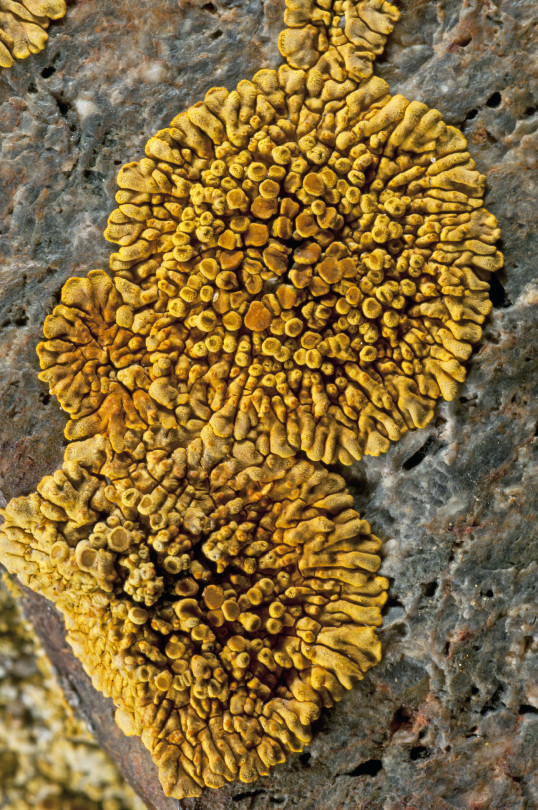
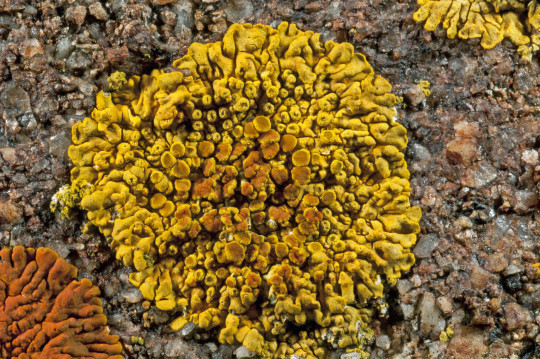
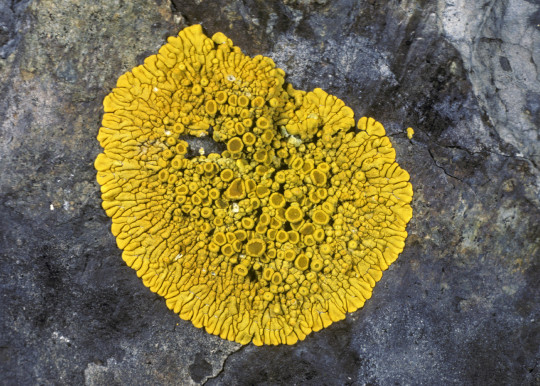


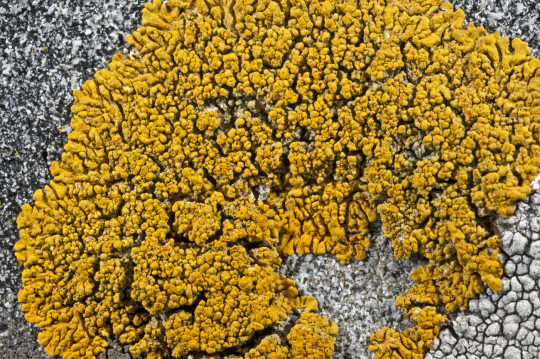
Polycauliona impolita
When I tell people that I study lichens and they respond "Oh, those little moss-looking things, right?" I want to show them pictures like these and be like "Does this look like moss to you?" But usually I am too nice and too excited to explain what a lichen is to do that. But not today! Does P. impolita look like moss to you? I think not! This crustose-placodioid lichen grows in rounded patches with an areolate (tile-like) central thallus and a marginal thallus of elongated lobes. The upper surface is yellow-orange to red-orange and often pruinose (covered in a fine powder), with orange, flat-disked apothecia clustering toward the center. P. impolita grows on non-calcareous rock in western North America.
images and info: source
#lichen#lichens#lichenology#lichenologist#mycology#ecology#biology#symbiosis#symbiotic organisms#green algae#fungus#no moss here#nature#naturalist#beautiful nature#weird nature#the natural world#natural science#life science#environmental science#fungi#trypo#tw: trypophobia#Polycauliona impolita#Polycauliona
370 notes
·
View notes
Photo
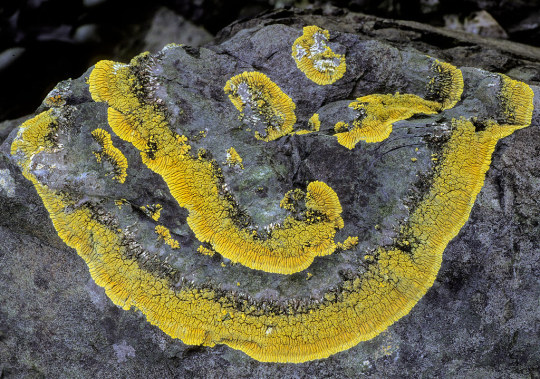
Placodioid lichen (Polycauliona verruculifera) at Pass Island, U.S.
Richard Droker
138 notes
·
View notes
Photo
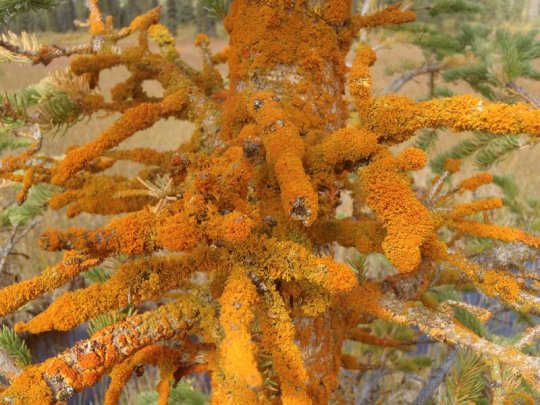
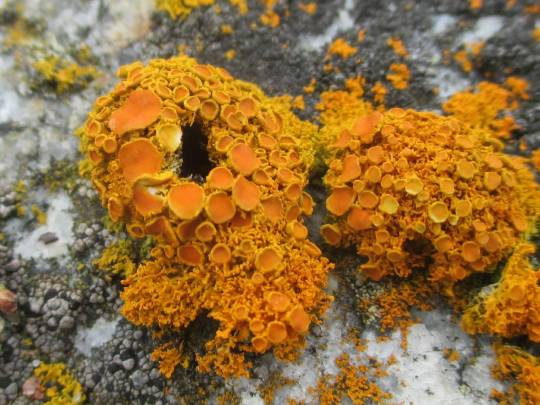






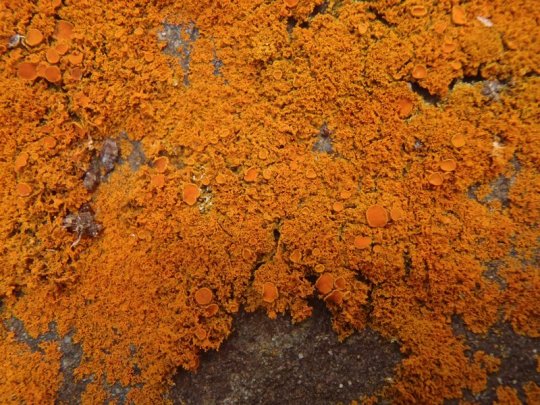

Polycauliona candelaria
Shrubby sunburst lichen
P. candelaria is about as subtle as fiery gas explosion, and I love that for her. Yes queen, take up space! This cushiony sub-fruticose lichen forms extensive yellow or orange colonies on sun-exposed and nutrient-enriched surfaces. It was not enough for this bold little friend to have soredia, no no--she has blastidia! These are vegetative propagules containing both fungal hyphae and algae that form on the lobe tips and bud off on one another. And when this lichen produces apothecia, the lecanorine margin around the disc often produces blastidia as well! The range of P. candelaria is poorly delimited, as it is variable in growth form and has many look-alikes, but it is likely circumpolar, and has been found in temperate and upland areas around the world. Making ordinary surfaces as absolute STATEMENT.
images: source | source | source
info: source | source
#lichen#lichens#lichenology#lichenologist#lichenized fungus#fungi#fungus#mycology#ecology#biology#botany#Bryology#systematics#taxonomy#life science#environmental science#natural science#science#nature#naturalist#beautiful nature#weird nature#the natural world#Polycauliona candelaria#Polycauliona#I'm lichen it#lichen a day#daily lichen post#lichen subscribe#I love lichens
297 notes
·
View notes
Photo




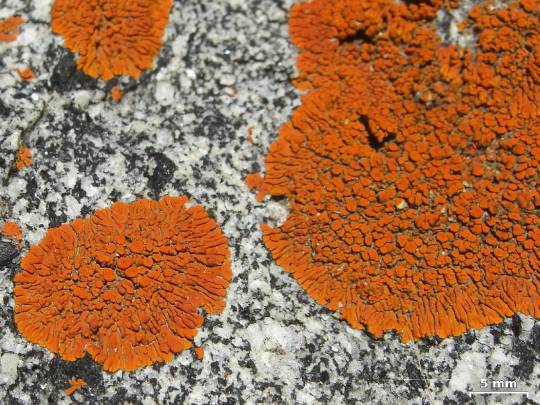




Polycauliona ignea (syn. Igneoplaca ignea)
Flame firedot lichen
Lichen scientific names change all the time. And when looking up info on P. ignea . . . I. ignea . . . sometimes Caloplaca ignea. . .this lichen, the name changes from source to source. Makes it hard to even do a quick google search, and I can’t imagine how hard it must be to cross reference from collection to collection and between papers, and I can understand how this would be beyond off-putting for anyone trying to learn about lichens casually. So good luck out there to anyone trying to learn more about lichens on their own, and I hope these posts are a decent source of consolidated info for y’all. This particular crustose lichen has bright red-orange, elongated, convex lobes and concolorous, lecanorine (shaped like a rimmed plate) apothecia. It grows on acidic rock in the southwestern USA and northwestern Mexico.
images: source | source | source
info: source | source | source
#lichen#lichens#lichenology#lichenologist#lichenized fungus#fungus#fungi#mycology#ecology#biology#botanical#bryology#not plants#systematics#taxonomy#life science#environmental science#natural science#nature#naturalist#beautiful nature#weird nature#Polycauliona ignea#Igneoplaca ignea#firedot lichen#I'm lichen it#lichen a day#daily lichen post#go outside#take a hike
155 notes
·
View notes
Photo
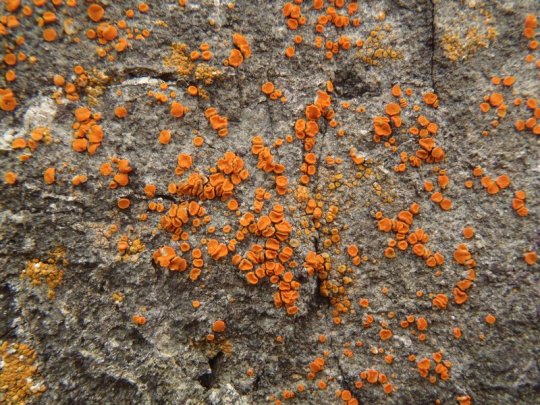

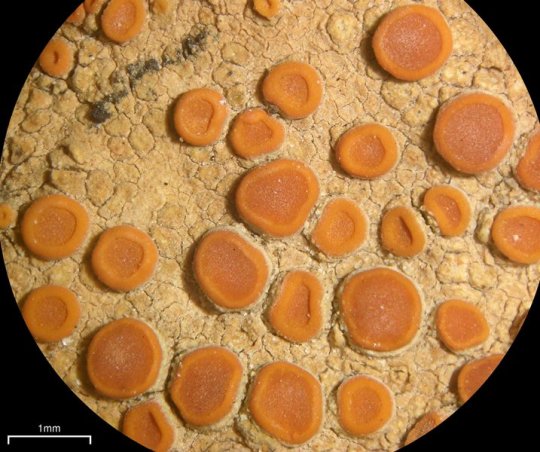







Polycauliona luteominia
Red firedot lichen
This crustose lichen has a thin, immersed basal thallus, and so generally appears as a smattering of round apothecia. The apothecia have a prominent margin, and a flat or concave disc. P. luteominia comes in two varieties: var. luteominia, which has orange apothecia, and var. bolanderi, which has bright red apothecia. Both can be found on rock and soil near the Pacific coast of North America.
images: source | source | source
info: source
#lichen#lichens#lichenology#lichenologist#lichenized fungus#fungus#fungi#mycology#ecology#biology#botany#bryology#systematics#taxonomy#life science#environmental science#natural science#nature#naturalist#beautiful nature#weird nature#go outside#take a hike#look for lichens#Polycauliona luteominia#Polycauliona#I'm lichen it#lichen a day#daily lichen post#I love lichens
136 notes
·
View notes
Text




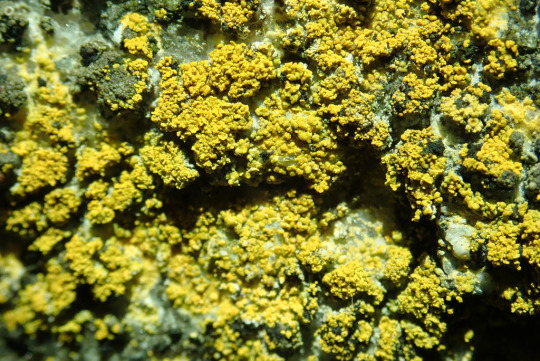
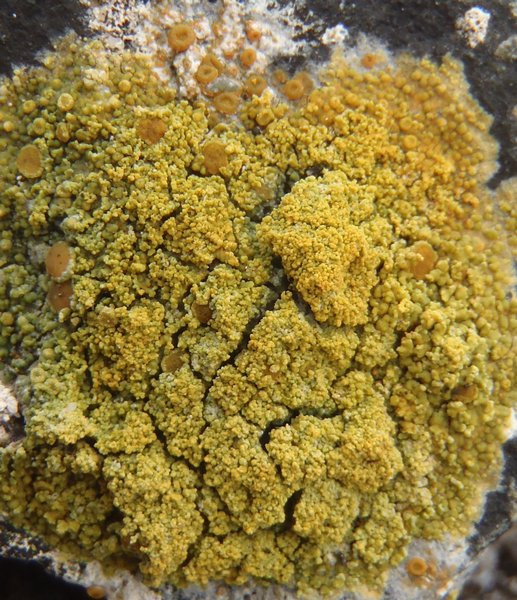


Polycauliona flavogranulosa
Grainy seaside firedot lichen
Orange you lichen this lichen today???
...
I'll see myself out.
images: source | source | source
108 notes
·
View notes
Photo



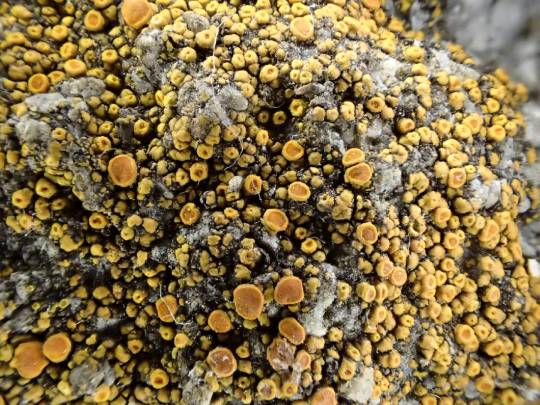
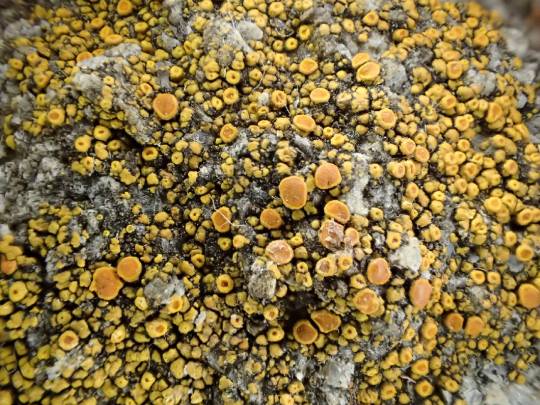
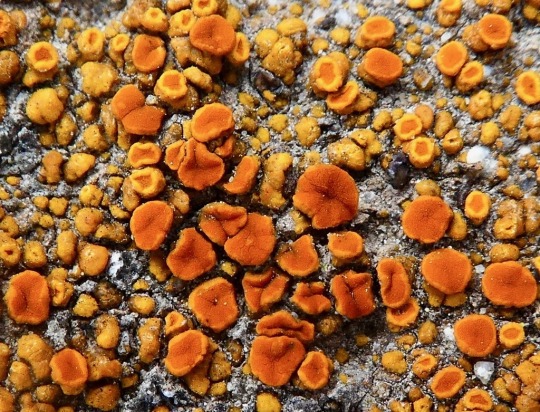




Polycauliona bolacina (syn. Caloplaca bolacina)
Waxy firedot lichen
Can you believe that color? I love desert lichens! P. bolacina really packs on the pigmentation to protect themselves from the sun! *friendly reminder to wear sunscreen* This squamulose-crustose lichen forms round scales overlapping and growing close together, forming thick, almost fruticose crusts. The surface is bright yellow or orange, and can appear chalky or shiny in texture. It has numerous, large apothecia with a thick margin and a flat orange disc. P. bolacina colonizes acid rock in North America--particularly the arid deserts of the southwest. My old stomping grounds! Wonder if I ran into this friend a time or two and didn’t recognize him. Next time I bump into him I will be sure to introduce myself and tell him I love him.
images: source | source | source
info: source
#lichen#lichens#lichenology#lichenologist#lichenized fungus#fungus#fungi#mycology#ecology#systematics#taxonomy#biology#botany#bryology#biodiversity#ecosystem#life science#environmental science#nature#natural science#naturalist#beautiful nature#weird nature#the natural world#go outside#take a hike#look for lichens#Polycauliona#Polycauliona bolacina#crustose lichen
66 notes
·
View notes
